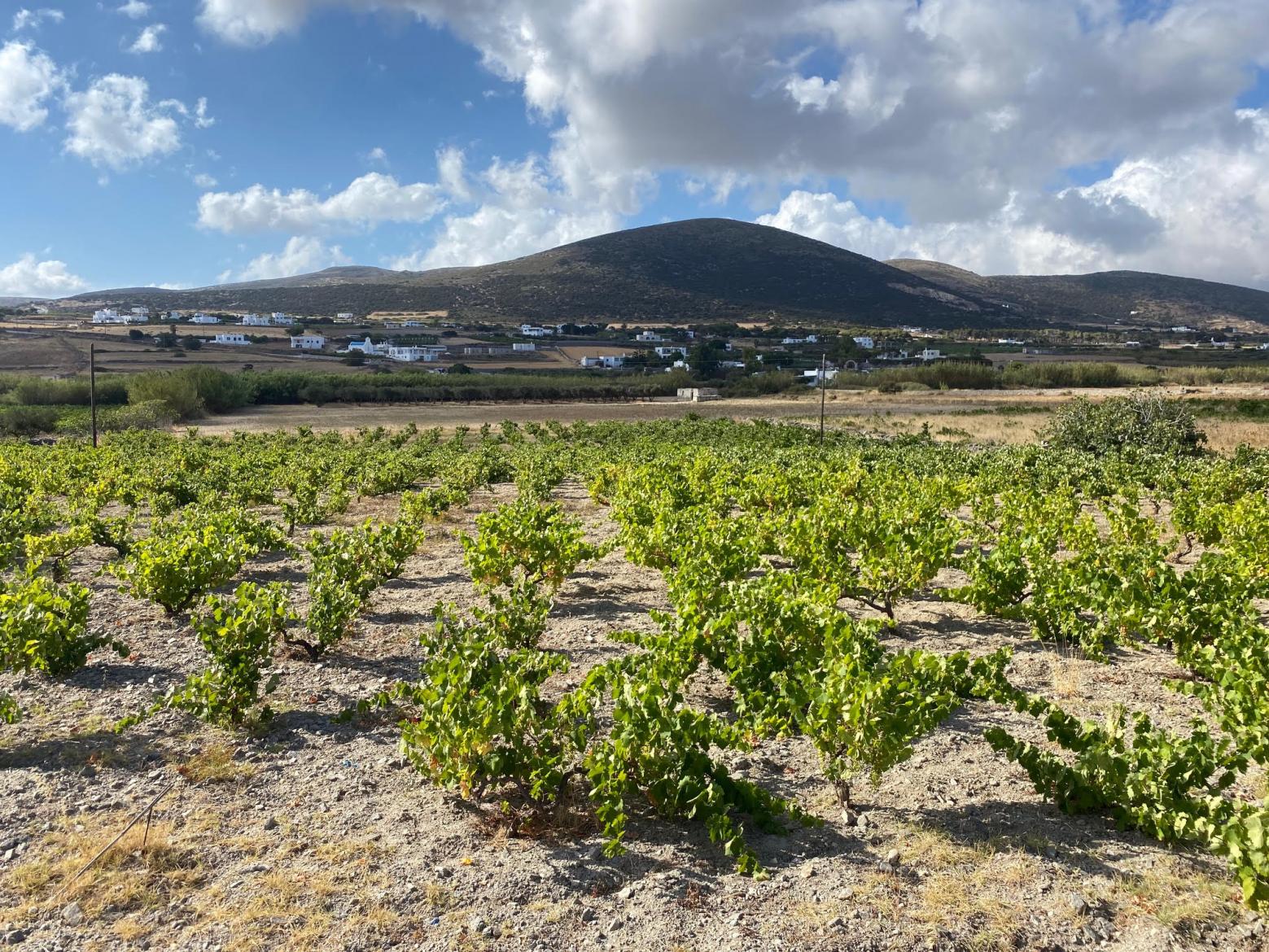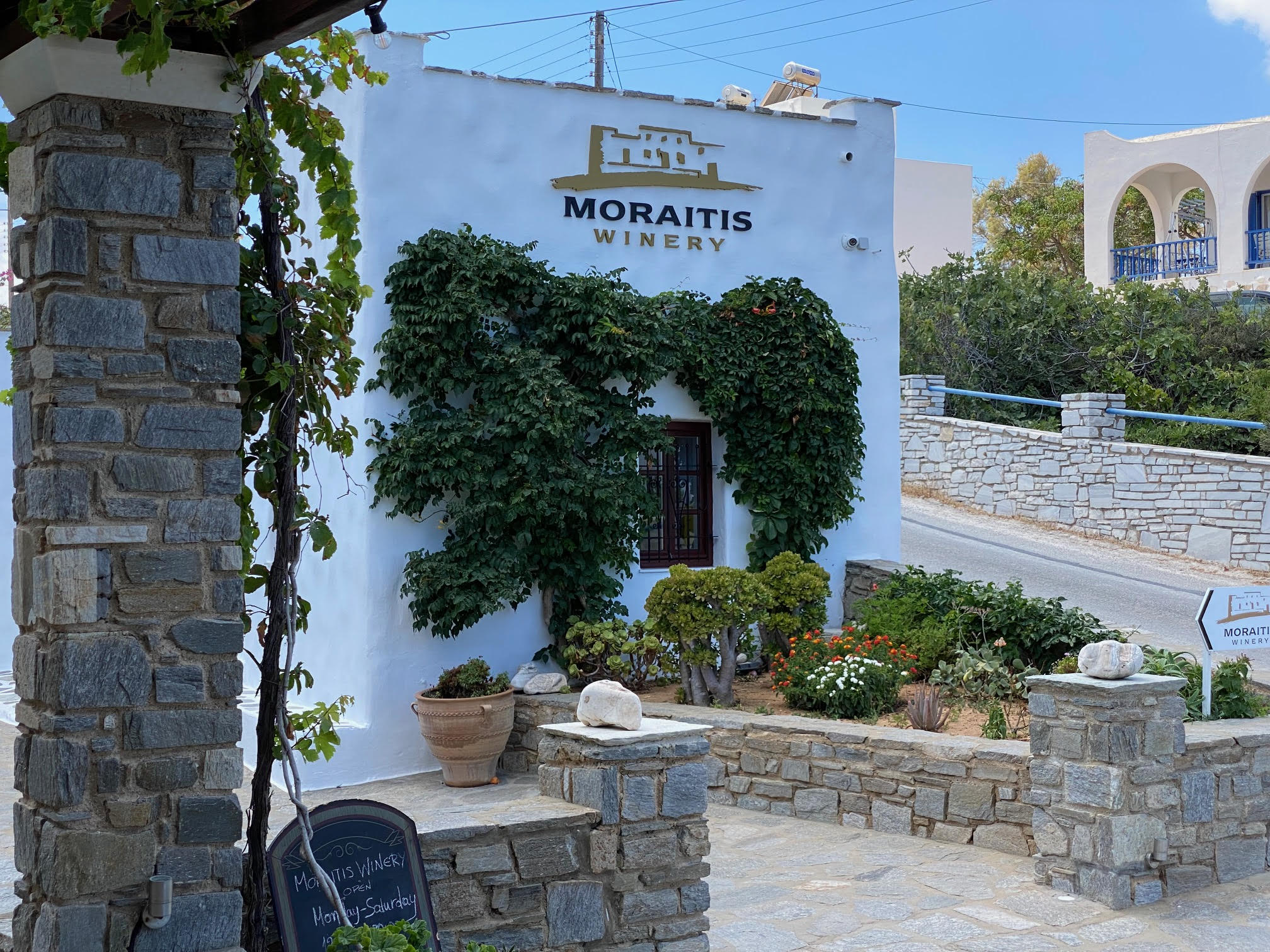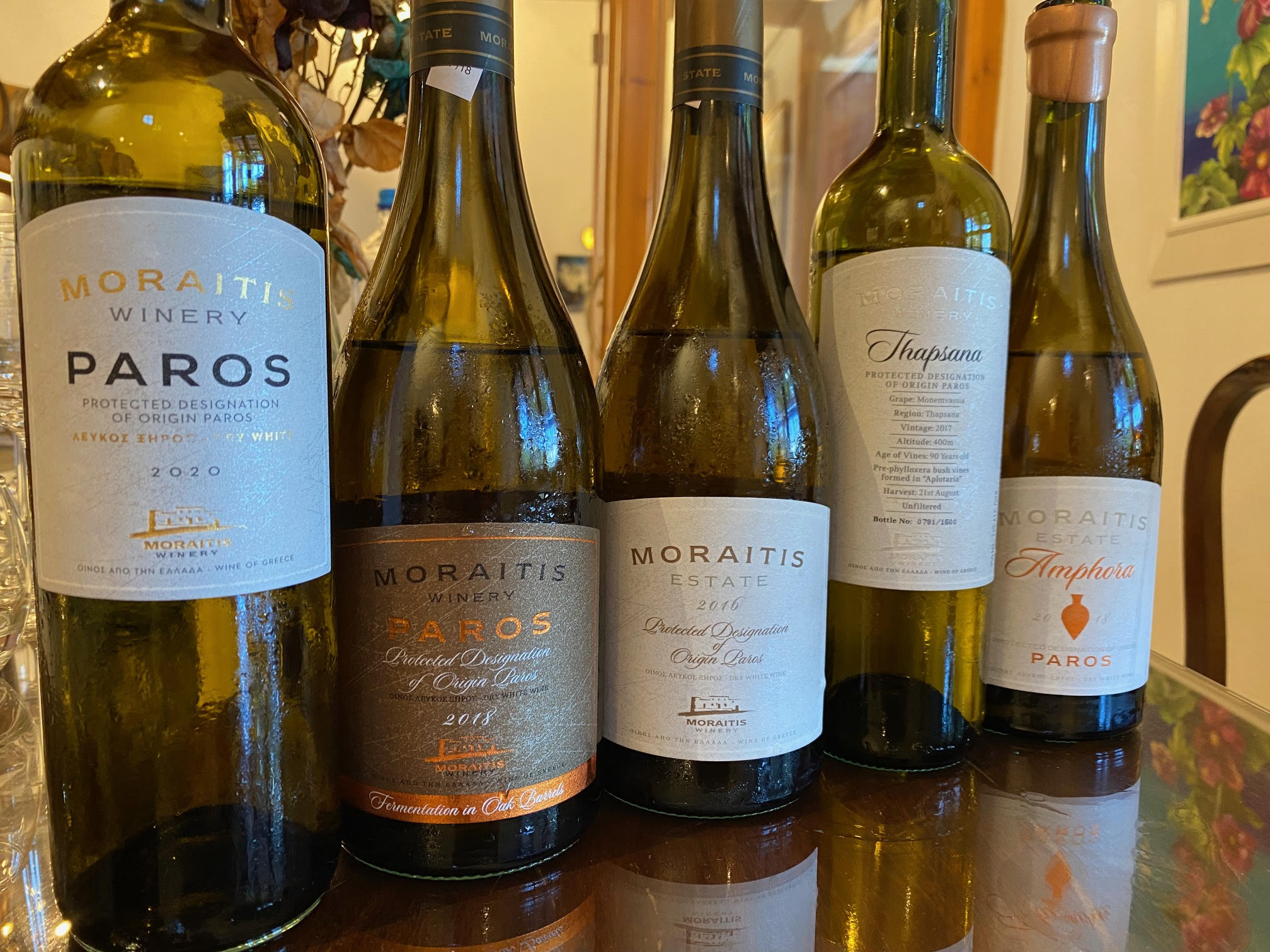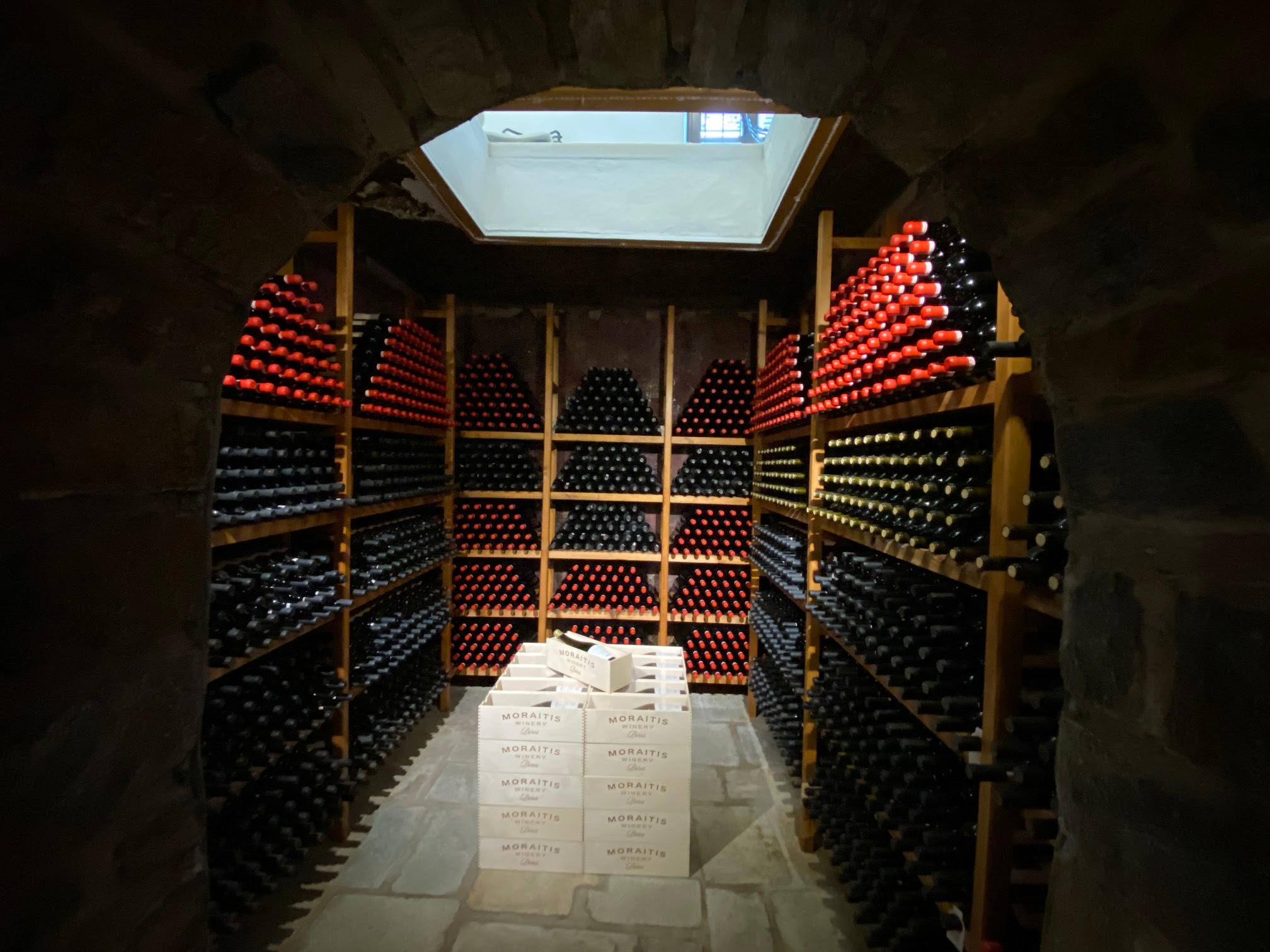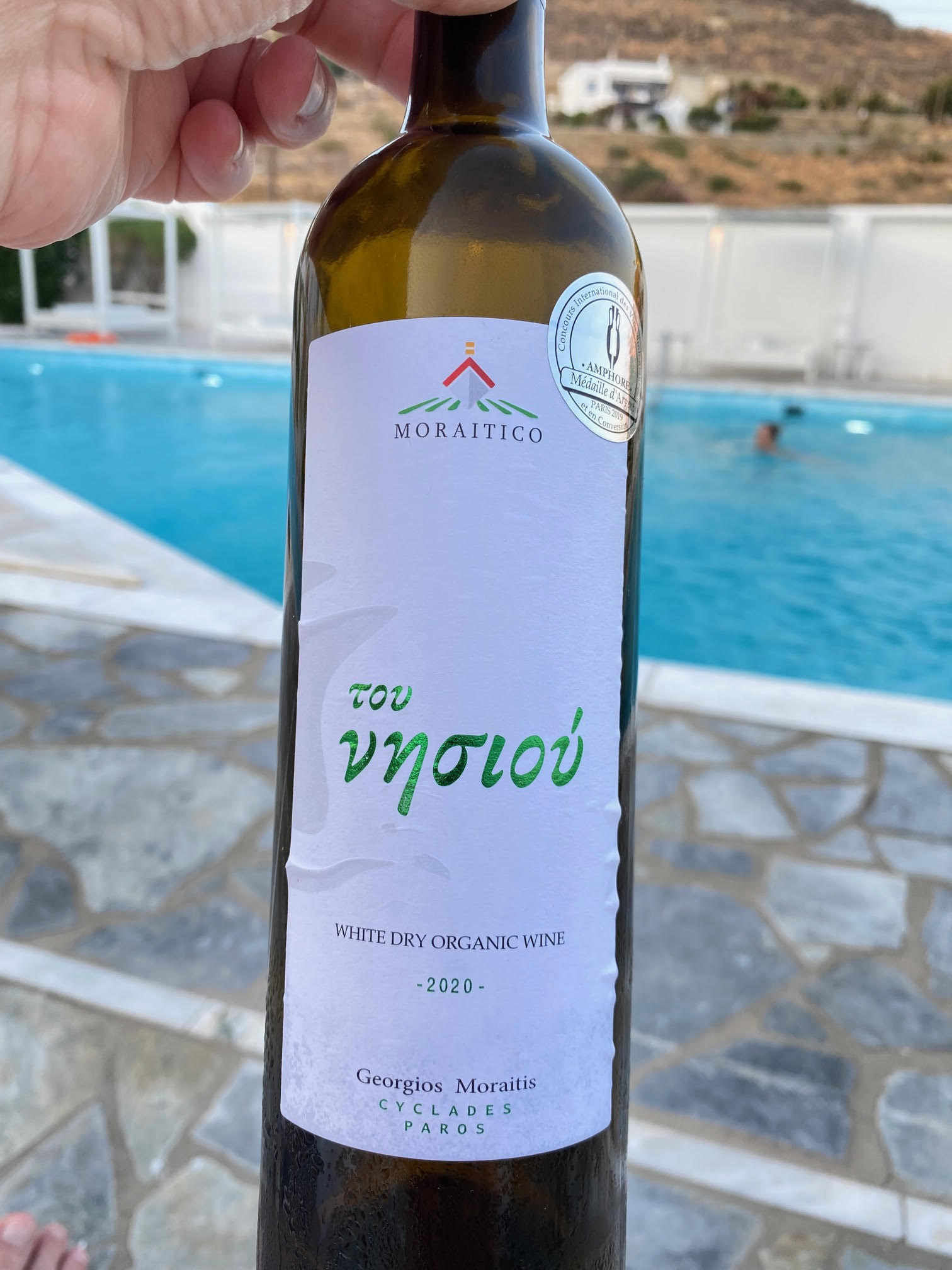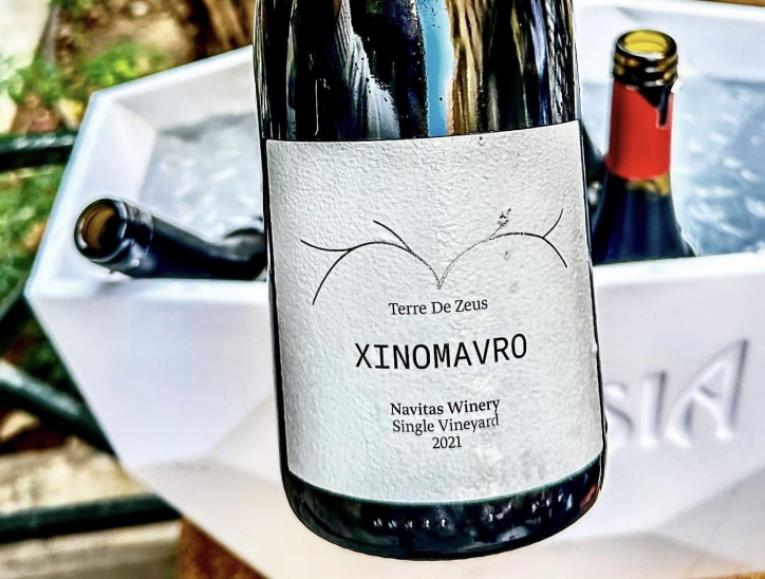The Wines of Paros: a bright vinous future
By Wojciech Bonkowski
Similarly to Santorini, but unlike the other Cyclades, Paros wine is not a novelty. The island has one of the oldest PDOs in Greece for its three classic styles: dry and sweet white of the local Monemvasiá grape and red of Mandilariá, traditionally blended in the press with Monemvasiá to soften the former’s notorious tannins. Although for many years, only the Moraïtis winery carried the flag of this renowned PDO and the vineyard area shrunk considerably under the pressure of tourism, there are definite signs of development. Today six wineries are bottling wine, helped in part by the upgrade in tourism and hospitality experienced notably in the Náousa town, which has become quite a premium destination. Moreover, Paros is the only island apart from Santorini and Tinos, which seems to have no problem selling its wines at 20–25€ per bottle.
The potential for quality viticulture is obvious. Firstly, unlike most other Cyclades, Paros is abundant in water, with drought much less of a concern. The varied soils are another plus: not only the marble for which Paros has been famous since Antiquity but also schist and iron-rich clay. It’s a prominent place, with no shortage of vineyards—many of them ungrafted—at 500–700 metres elevation, in locations distant enough from the coast to be unattractive for tourism development. The current total area is cautiously estimated at 300 hectares.
Finally, there is an exciting mix of local grape varieties: not just Monemvasiá and Mandilariá, but also Maloukáto, the pan-Cycladic white Potamisi, early-ripening untannic red Mavráthiro, fruity and tannic (but less than Mandilariá) Vaftra, and especially Aïdani Mavro, a light-skinned, very vigorous variety giving very soft, very fruity reds—or some of the most intriguing maritime rosés I’ve encountered. Paros has a bright vinous future.
This historical Paros family estate started bottling in 1967 and is now run by 4th-generation Theo and Savvas Moraïtis. A new winery was built in 1999, operating a comprehensive tasting programme (1/3 of the production is sold in situ), and there is also a lovely restaurant. The winery produces 50% white and 50% red wine, with some genuinely excellent results—I was impressed by the consistent quality throughout the range, and the latest additions such as the single-vineyard and amphora-aged white Provence-styled rosé are making a real difference.
Sillogi White 2020
Assýrtiko and Malagousia. The estate’s entry-level white, widely available everywhere in Paros, at 9.50€. Characterful, lightly saline, crunchy, pleasant and straightforward. 87/100
Paros PDO White 2020
12.5%. Unoaked 100% Monmvasiá from bought-in grapes. 40,000 bottles of an extremely solid wine, with a lovely Mediterranean smell of wild herbs and salty breeze. Relatively light in body, citrus and salt on the palate. Firm, crunchy minerality. 11€ well spent. 88/100
Paros PDO White Fermentation in Oak Barrels 2018
13%. This comes from higher elevation vineyards and spends six months in new Nadalié oak. Creamy texture, good quality oak. Less mineral but otherwise resembles the style of Santorini Vareli, with wax and honey. Still quite youthful. Good food wine. 14€. 89/100
Paros PDO White Moraitis Estate 2016
13%. Only from the family’s vineyards, with 20% aged in new Seguin-Moreau barrels. Showing some positive ageing and complexity, with integrated oak, notable concentration, and attractive fruit sweetness. This vintage is at its peak or just past, with a hint of dryness to the finish. You sense that Monemvasiá is never a very textured grape, so the ageing is towards wax and dried herbs (a bit like Sémillon or Chenin) rather than breadth and oiliness. Excellent wine, though not cheap at 22€. 89+/100
Paros PDO White Thrapsaná 2017
13%. The first vintage of a single-vineyard 90-year-old Monemvasiá at 400 metres elevation, trained in aplotariá: low bush vines crawling in holes to protect from the strong Meltemi winds. Aged 1 year on its lees in stainless steel only. Slowly ageing as the Estate White above, but more allusively scented: tangerine, orange blossom, honey. The palate is ripe but firm, with Paros’s signature marbley minerality. This is a successful attempt at a more concentrated, textured Monemvasiá with more seriousness, at the expense of direct purity. 26€. 91/100
Paros PDO White Thrapsaná 2019
12.5%. Not released yet. Minor evolutive toastiness, followed by Mediterranean herbs. Acidity is a little softer than 2017, otherwise similar in style, engaging with plenty of content. 2500 bottles will be available from this vintage.
Paros PDO Amphora 2018
13%. Hand-destemmed and then aged on skins for six months in a Tuscan high-fired amphora, unfined, bottled with no SO2 and certified organic. 23€. Peach and apricot flesh on the nose, which is elegant and fruity. The varietal expression of Monemvasiá is recognisable but magnified as through a looking glass: ripe orange and tangerine, resin, salt crystals. Not so “orange” or tannic, and harmonious. Excellent. 90/100
Malagousia Single Vineyard Ysterni 2020
12.5%. The first Malagousia to be planted in the Greek islands, now at 18 years; unoaked. 11.50€. Very varietal, pungently floral. The palate has that light, crunchy, easy flowing texture of the basic Paros White again here. Attractive. 88/100
Assýrtiko Single Vineyard Sarakiniko 2020
13.7%. Organic and unoaked. 17€. Green fruit on the nose. Acidity is more embedded than Santorini but expresses the minerality—and the marble-like simplicity of Paros—very well. Very good. 89/100
Damerale 2020
12.5%. A rosé of 50% Aïdani Mavro, 40% Mavráthiro and 10% Mandilariá. Organic. Newly bottled, made in a Provence style and attractively packaged; 16.50€. Ripe fruit on the nose is just a little phenolic and slightly buttery. There is some good flavour here, but it lacks the poise and precision of the best rosés in this popular style. 88/100
Moraïtis Estate Rosé 2020
12.5%. 100% Aïdani Mavro, made in a slightly fuller style than the above, which I found more authentically Cycladic. Full-blown red fruits, perhaps less length but plenty of character. It finishes with a hint of peppery tannins. Authentic, and a great bargain at 11€. I also tasted the 2018 vintage which was still holding firm. 89/100
Sillogi Red 2018
Mavráthiro and Mandilariá with 12 months of oak; organic. Good quality oak, a recurrent impression here at Moraïtis. Pleasantly fruity and floral, not too dry. Excellent for the money (9.50€). 88/100
Paros PDO Red 2018
13%. 75% Mandilariá lightened with 25% white Monemvasiá, aged one year in French and American oak. Dark as the Aegean Sea, or darker. Spicy oak and rustic Mandilariá expression. Tannins thick as a carpet, slightly bitter, not fruity, resembles an Aglianico from southern Italy. 88/100
Paros PDO Red Reserve 2018
13%. Same blend as above but from higher vineyards and with 18 months of oak. 19€. Spicy and complex shows how Mandilariá takes off with oak and bottle ageing. Still really tannic, almost chestnutty-bitter, and not immensely fruity, but with better texture and a sense of breadth. A monster. 89-90/100
Paros PDO Red Reserve 2012
13%. This was poured via Coravin to show me the evolution of this highly tannic bottling. A nose of Provence herbs mix, tangy spice (coriander seeds), fine leather, (very) slowly balsamising on the palate. Lovely evolving red-black fruits here and yet still so very firmly tannic! Needs another ten years. Putting red Paros wines firmly on the map. 92/100
Paros PDO Red Reserve 1992
12%. After I said “needs another ten years” about the above, this bottle was miraculously produced. This vintage was still made to the original Paros Red PDO recipe, consisting of 2/3 white Monemvasiá to 1/3 red Mandilariá! The wine holds firm after nearly 30 years, with red berries, wild herbs, and relatively little evolution. You have to taste the spritely, emphatic tannins on the palate to believe it: a wine still on its way up! Showing more structure than Tannat or Sagrantino, these highly robust wines are unique.
Paros PDO Malvasia 2 Years 2016
14%, ~150g sugar. White Monemvasiá grapes are dried for two weeks under the sun and aged in used French oak. 25€ for 0.5L. The fleshy grapey and figgy expression instantly remind you that this was the original sweet Venetian “Malvasia” style back in the early modern era. Medium complexity at this age, broad, textured, somewhat sweet, a little bitter too. Captivating. A perfect postprandial glassful, more interesting than Metaxa and more digest than espresso. 91/100
Paros PDO Malvasia 4 Years 2014
14%. 38€. Mahogany colour. The treacly texture here (surprisingly for a relatively young wine in this style) is also quite crisper. Close to a Santorini Vinsanto style, but with a more savoury, bitter olive edge. Exquisite complexity for its age. Worth the price. 93/100
Amma 2011
14%. A sweet red wine of Aïdani Mavro and Mandilariá dried under the sun. Youthful for its age with a profile of red fruits, less pungent than Vinsanto if less pure than Valpolicella Recioto, closest in style to a young Maury—I guess it’s the super tannic Mandilariá keeping the evolution at a very slow pace. Not complex, but very good indeed. 90/100
Two more wines tasted from Paros:
Domaine Roussos / Asteras Paros PDO White 2020
Seems a little evolutive for 2020 with a baked apple / blonde raisin character, but also fresh, with green fruit, slightly herby, with the elusive resiny tang of Monemvasiá. Decent structure, finishing even slightly herby–tannic. A delicious bottle of wine. 89/100
Moraitico Tou Nisioú White 2020
12%. Organic. Not a PDO because of a blend of Assýrtiko, Monemvasiá and Malagousia. 14.50€. Very Muscatey floral aroma of Malagousia but also a resiny touch of Monemvasiá. An outstanding light Mediterranean white wine, though less idiomatic than Moraïtis’s pure Monemvasiá. Fresh and very digest, a pleasant wine. 88/100
Wojciech Bońkowski is a wine writer from Poland, author of four wine books and editor-in-chief of the largest Polish wine medium with 600K readers yearly, Winicjatywa. In June 2017 with fellow wine writers Ewa Rybak and Ewa Wieleżyńska, he launched Ferment, Poland’s new printed wine magazine. He regularly contributes to Meininger’s Wine Business International and www.timatkin.com, and is a Decanter World Wine Awards judge. He currently serves as President of the Polish Wine Trade Association and is a Stage 3 Master of Wine student. He specialises in the wines of Italy, Greece, Croatia, Central Europe, and Port. He is moreover a 50 Great Greek Wines judge. And he actually has another life in which he researches 19th-century music.
